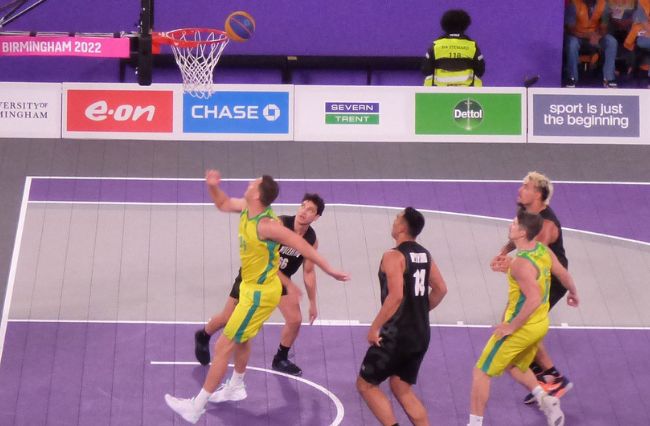Over the last decade, more and more high profile elite athletes have returned from pregnancy to excel in their sport. When Australian Diamond Gretel Bueta returned to the international netball stage in the Quad Series after having her first son Bobby, she went on to be the player of the series and a stand-out in Australia’s successful gold medal campaign at the Commonwealth Games.
Bueta is just one example of athletes who had a child during their playing career and returned in even better form. Meanwhile, there has been increasing conversation about women, sports and maternity issues. Athletes such as former Matilda Heather Garriock advocate for maternity rights, which include financial support when returning to sport and overall pay equality.
In their study of elite sportswomen who became mothers, Margie Davenport and Tara-Leigh McHugh found that 20 women who trained or competed at an elite level just prior to becoming pregnant, were scared to share their news of being pregnant. They were fearful of losing their position in a team, losing funding, or being viewed as not being as committed to sport.
Things, however, are beginning to change for sporting mothers. The new AFL and AFLW Collective Bargaining Agreement (CBA) outlines a 12 month pregnancy policy, which aims to provide support and welfare to soon to be mothers in the AFLW. The plan will continue until the end of 2027, where it will undergo review.
For AFLW Melbourne Demons player Samantha Johnson, the agreement has helped her feel more secure of her place in the club after having her baby Luca in April. She returned to the field just four months after giving birth, and recalls the nerves she felt before telling the Melbourne staff about her pregnancy.
“I was panicking because I’d only just got drafted and then I found out I was pregnant,” she tells upstart.
“I went straight into the club, told [the staff] and my anxiety eased straight away. I felt really comfortable with my decision to continue with my pregnancy.”
Another issue for women is simply understanding what their body can and can’t do during and after pregnancy, or because of pervasive fears of hurting the child.
Recreational netball player Narelle Draper has made several returns to the sport between having her four children. She continued to play until the seven-week mark of her first pregnancy, and to nine weeks in her other three. As a defender who deals with constant contact during the game, Draper decided to step back early to avoid any risk to her unborn children.
She tells upstart how it felt getting back out on court after having her first child.
“When a player bumps into you, your mindset changes dramatically to ‘you can’t bump into me, I’m a mum’,” she says.
When they become pregnant, most of the time, a woman knows it’s time to stop when their body tells them to, or symptoms start to take over, making sport uncomfortable. This is often by the second trimester for women in high impact sports such as football or netball, because the baby is no longer supported by the pelvis.
Elise Fraser, a physiotherapist and lecturer with an expertise in women’s pelvic floor health at the University of Melbourne, says coaches and staff should be aware of not only the musculoskeletal pain associated with pregnancy, but also the hidden symptoms such as pelvic floor and mental health.
“People don’t want to talk about vaginas or incontinence. These are young active women,” she tells upstart.
Women also need to know what to expect after having a baby, especially when returning from a caesarean, because it creates a very different rehab experience to a vaginal birth.
“We’ve got to remember they’re coming back from major abdominal surgery if it’s a caesarean or they might’ve had significant muscle tears with a vaginal birth. There’s a rehab process and it’s not just the baby’s being born.”
According to the Women’s Medicine Collaborative, pelvic-perineal dysfunctions are the most common complications after pregnancy. For first time mums, 35 percent experience urinary incontinence after giving birth, and 20 percent experience severe pelvic floor muscle injuries.
Fraser says Pelvic Floor Disorders (PFDs) are one of the most common factors that impact a woman’s return to sport as control over the bladder weakens. She recommends mums complete strength training and cardiovascular exercise to match the previous level of fitness.
The British Journal of Sports Medicine outlines the general recommendation when returning to sport is to follow the six R’s: Ready, Review, Restore, Recondition, Return and Refine. They help give flexibility in team selections to support pregnant athletes or those on maternity leave.
When assisting those returning to sport post-birth, Fraser looks at the person as a whole, not just at the physical changes that occur during pregnancy and postpartum.
“Don’t forget to consider [the athlete’s] mental health, abdominal wall, are they wearing the right bra, and the risk of relative energy deficiency in sport,” she says.
Samantha Johnson says the support of the Melbourne Football Club and the guidance from her pelvic floor therapist helped her through the postpartum journey.
“[The club and therapist] worried as a team behind the scenes to set me up, so that when I got to the footy club, they were across all the exercises I should be doing and designed my program that way,” she says.
“They tapped into external support when needed but I think it’s an area that will grow within the AFLW in the years to come.”
Support from sports clubs and families is a major factor when assisting women through their return to sport. Narelle Draper says family was her biggest support across her four pregnancies.
“[It is] having the emotional support and someone you can call as having someone who would be prepared to step up and babysit if you needed, which was big for me getting back into sport.”
Photo: Netball by Nottingham Trent University available HERE and used under a Creative Commons license. This image has not been modified.







